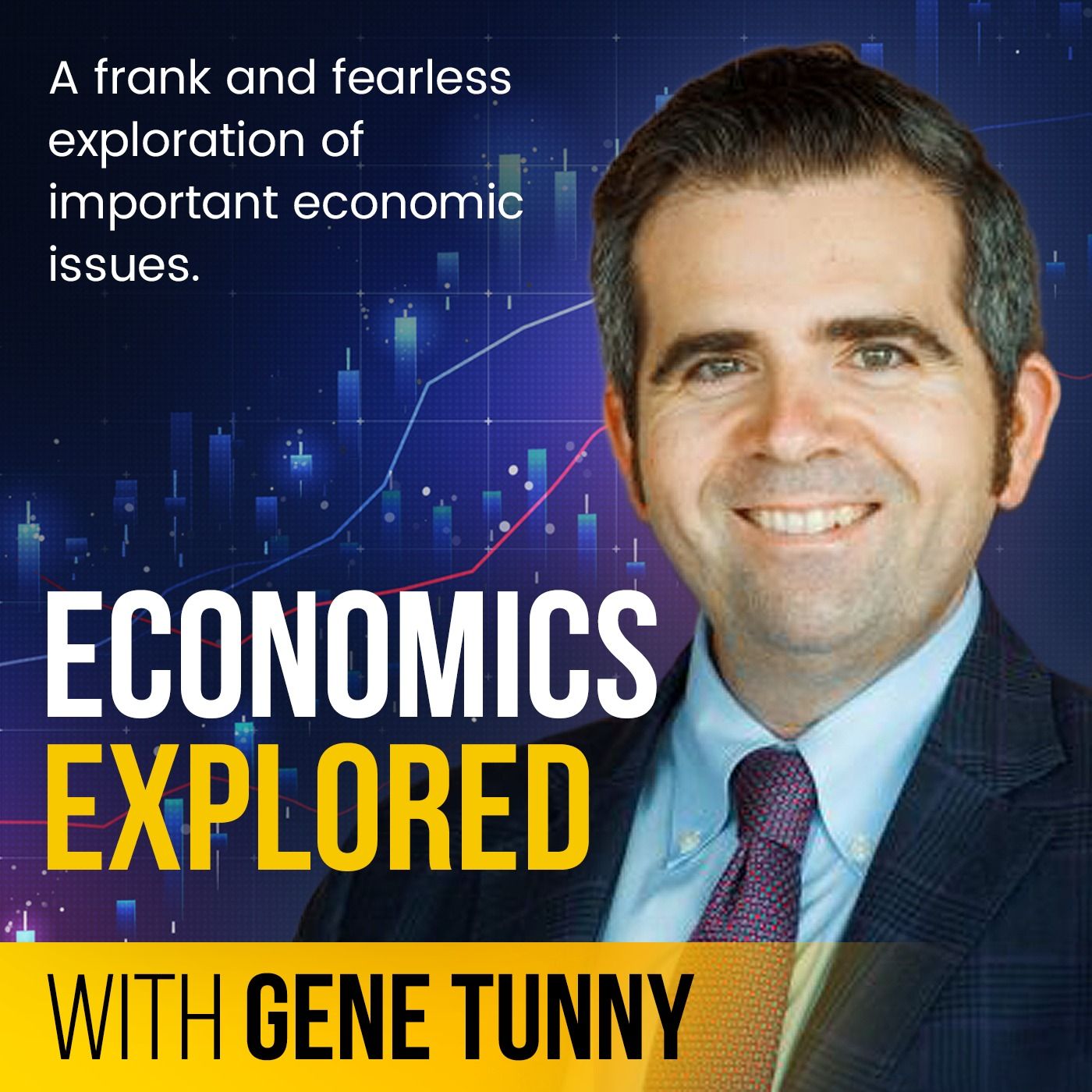Listen "Popularizing Keynes: How Alvin Hansen and Evsey Domar Shaped Post-War Macroeconomics - EP245"
Episode Synopsis
In this episode, show host Gene Tunny explores the influential theories of economists Alvin Hansen, the “American Keynes", and Evsey Domar. The episode was inspired by a first edition copy of Hansen and Perloff’s 1944 book “State and Local Finance in the National Economy” that Gene was gifted. It includes a handwritten inscription from Hansen to Domar, his student at Harvard. Key topics include the Keynesian IS-LM model, the secular stagnation hypothesis, and the Harrod-Domar growth model. The episode provides a rich historical context and examines the relevance of these theories to today's economic challenges.If you have any questions, comments, or suggestions, please email us at [email protected] or send a voice message via https://www.speakpipe.com/economicsexplored. What’s covered in EP245Book by Alvin Hansen and Harvey Perloff on State and Local Finance in the National Economy. (0:00)Alvin Hansen's contributions to economics, including popularizing Keynes's theory and teaching influential students such as Paul Samuelson and Evsey Domar. (5:06)IS-LM model. (11:13)Keynesian economics and secular stagnation hypothesis. (17:42)Fiscal policy and its impact on the economy. (25:28)Domar's life and growth model. (32:29)Harrod-Domar model and its implications for economic policy. (39:00)Economic growth models and their limitations. (45:22)TakeawaysSecular Stagnation Hypothesis: Hansen's theory suggesting that mature economies could face prolonged periods of low growth due to structural factors.IS-LM Model: Developed by Hansen and Hicks, this model became a foundational tool in macroeconomics for analyzing the effects of fiscal and monetary policy.Fiscal Perversity Hypothesis: Hansen and Perloff's analysis showing that state and local fiscal policies can sometimes exacerbate economic downturns.Harrod-Domar Growth Model: An important Keynesian model that emphasizes the relationship between investment and economic growth, though not fully explaining long-term growth.Legacy and Influence: Both Hansen and Domar significantly shaped the development of economic theory and policy, influencing key areas such as social security and public investment strategies.Links relevant to the conversationInscription from Hansen to Domar on Gene’s copy of State and Local Finance in the National Economy:https://drive.google.com/file/d/167cJbNhxBJpsKRwSYGHxbjupX1Q3Iacx/view?usp=sharingWilliam Easterly’s paper on the Harrod-Domar model:https://papers.ssrn.com/sol3/papers.cfm?abstract_id=11020Fiscal perversity papers:Fabrizio Carmignani’s article “Can public expenditure stabilize output? Multipliers andpolicy interdependence in Queensland and Australia”:https://www.sciencedirect.com/science/article/abs/pii/S0313592615300242?via%3DihubTamim Bayoumi and Barry Eichengreen’s paper “Restraining Yourself: The Implications of Fiscal Rules for Economic Stabilization”:https://www.elibrary.imf.org/view/journals/024/1995/001/article-A002-en.xmlAn abridged version of Skidelsky’s three-volume biography of Keynes:https://www.penguin.com.au/books/john-maynard-keynes-9780143036159Lumo Coffee promotion10% of Lumo Coffee’s Seriously Healthy Organic Coffee.Website: https://www.lumocoffee.com/10EXPLOREDPromo code: 10EXPLORED Thanks to Obsidian Productions for mixing the episode and to the show’s sponsor, Gene’s consultancy business www.adepteconomics.com.au. Full transcripts are available a few days after the episode is first published at www.economicsexplored.com.
More episodes of the podcast Economics Explored
Is Gold Flashing a Warning Sign? ep303
15/11/2025
 ZARZA We are Zarza, the prestigious firm behind major projects in information technology.
ZARZA We are Zarza, the prestigious firm behind major projects in information technology.
